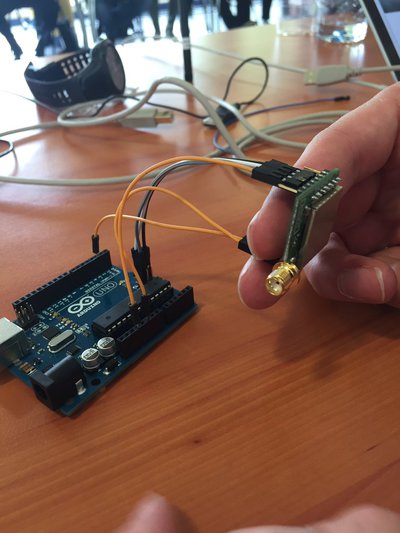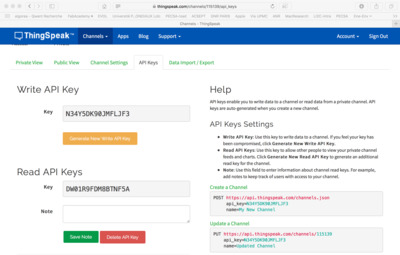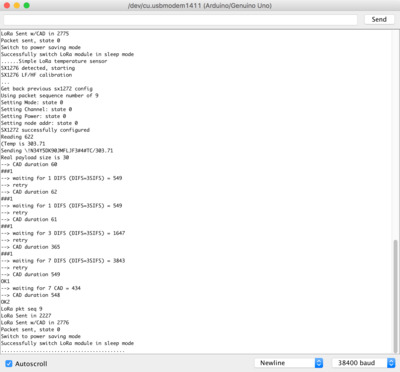 Arduino programs are downloaded from Congduc Pham Github repository. Additional libraries are downloaded from here
Arduino programs are downloaded from Congduc Pham Github repository. Additional libraries are downloaded from here
#define IS_SEND_GATEWAY
The Arduino then serves as a gateway between the PC/Mac it is connected to and the LoRa module.
Select the baud rate in serial monitor: 38400 baud (consistent with the code flashed Serial.begin(38400);)
The serial monitor is used as a console to talk to the module.
A gateway is configured with a Rasperry Pi, and receives the messages from all the participants.
 The key (e.g. N34Y5DK90JMFLJF3) is to be inserted in the Arduino sketch, line 343:
The key (e.g. N34Y5DK90JMFLJF3) is to be inserted in the Arduino sketch, line 343:
#ifdef FLOAT_TEMP
ftoa(float_str,temp,2);
#ifdef NEW_DATA_FIELD
// r_size=sprintf((char*)message+app_key_offset, "\\!#%d#TC/%s", field_index, float_str);
r_size=sprintf((char*)message+app_key_offset, "\\!N34Y5DK90JMFLJF3#%d#TC/%s", field_index, float_str);
#else
Field index can also be adjusted within the Arduino sketch (default value is 4).

 The measures obtained from the Arduino board are then recevied on the web interface. Nice.
The measures obtained from the Arduino board are then recevied on the web interface. Nice.
Following the tutorial is relatively easy. Participants were not especially prepared to this exercice, and most of them succeded, essentially thanks to mutual help.
However, the intrinsic difficulty is high, and any little glitch, in a library, in a sketch or in the server config can break the whole chain, and then most of the participants would clearly be unable to fix by themselves.
That is one advantage of using technologies spread through a network (of people): it increases the robustness to changes and evolutions, providing a wider support to non-techincal users. FabLabs appear crucial here.